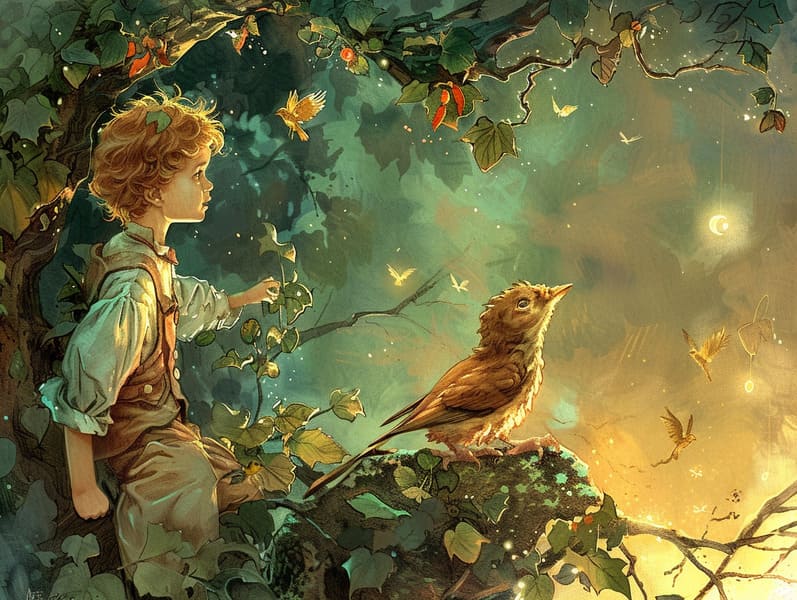The Creation of Classic Fairy Tales with Its Lasting Delight.
The Creation of Classic Fairy Tales with Its Lasting Delight.
Blog Article

Famous fairy tales have long histories. These narratives have been conveyed from one generation to the next long before they were ever inscribed. They sprang from a variety of backgrounds, including American traditions. They were initially conveyed among older generations, often carrying themes and messages aligned with the societal norms and beliefs of the time.
The Brothers Grimm, Jacob and Wilhelm (the Grimm brothers), were among the first to assemble many of these beloved fairy tales. Their volume, "Grimm's Fairy Stories," included narratives like "The True Bride," "The Bread Crumb Trail," and "Snow-White and Rose-Red," which have since become essentials in the world of famous fairy tales. Similarly, Hans Andersen's whimsical stories, such as "The Sea Maid," and "The Ugly Duckling," have captured hearts worldwide, guaranteeing their place in the pantheon of treasured fairy tales.
Though they are old, classic fairy tales remain as significant as ever, especially as children's night stories. These magical stories are now available in different formats, including beautifully illustrated books, charming animations, and digital storybooks.
Their lasting presence can be ascribed to several captivating elements:
Valuable Lessons: Ancient fairy tales often provide important moral lessons. Narratives like "The Shepherd Boy and the Wolf" teach the importance of truthfulness, while "The Hare and the Tortoise" illustrate the virtues of resolve and unpretentiousness. These narratives offer young ones clear distinctions between moral and immoral, shaping their moral compass in a subtle yet profound way.
Warmth and Understanding: Fairy tales frequently portray characters facing problems and hurdles, inspiring young listeners to sympathize with their struggles and champion their triumphs. For instance, "Beauty's Beast" illustrates the importance of seeing beyond looks to acknowledge the inner core of a person, cultivating kindness and insight.
Cultural Comprehension: Many traditional fairy tales are infused with the cultural contexts from which they blossomed. Learning from these stories can provide captivating looks into different ways of life, advancing a sense of cultural understanding and acknowledgment.
Fantasy and Imagination: The supernatural elements in timeless fairy tales—talking beasts—stimulate children’s dreaming abilities. These narratives take readers to fantasy realms, motivating fantasy-filled thoughts and a sense of delight that continues a lifetime.
Traditional fairy tales are not only whimsical but also teaching. They work as charming tools in developing various intellectual and emotional capacities in young ones. When traditional fairy tales are spoken, they strengthen language acquisition by bringing new terms and meanings and complex sentence structures. This practice also promotes auditory perception and attentiveness, as little ones track the narrative, ready to see what happens next.
Furthermore, deliberating the themes and characters of classic fairy tales can improve analytical skills here and thinking skills. Children are taught to notice patterns, forecast, and realize cause and effect. These explorations also facilitate children communicate their thoughts and feelings, fostering their emotional intelligence.
In today’s online age, the prevalence of internet fairy tales has made these stories more within reach than ever. Websites and online apps make available comprehensive collections of ancient fairy tales that can be experienced or listened via anytime, anywhere. Fairy tales voiced are particularly common, featuring an interactive way for young ones to appreciate these fantastical tales. Sound books and voiced videos take characters and settings to life, often paired with fantastical soundtracks and songs that elevate the tale-telling adventure.
The unfading fascination of ancient fairy tales lies in their ability to change to changing times while holding onto their central messages. Contemporary renditions of these tales often feature more varied protagonists and modern settings, making them pertinent to today’s audience. However, the central morals of guts, warmth, and equity remain unchanged, continuing to connect with children of all ages.
Traditional fairy tales also offer a sense of security and knowability. They extend a well-structured narrative with a clear beginning, middle, and end, often coming to a close with the settlement of conflicts and the triumph of good over bad. This uniformity can be relieving for kids, delivering a sense of steadfastness in an shifting world.
Old fairy tales continue to entrance and educate new generations, maintaining their enchantment and applicability in modern society. As bedtime stories for kids, they afford a perfect blend of charm and understanding, backing moral values, empathy, and creativity. The proliferation of internet fairy tales and the well-received status of fairy tales voiced assure that these ancient tales remain acquirable to new generations.
By sustaining and sharing these stories, we continue to commemorate the rich tapestry of inventiveness and cultural heritage. Whether you are reading a vividly illustrated book, perusing a virtual collection, or hearing an narrated book, the radiance of children's fairy tales is always within reach. These narratives reveal of the invariable ability of stories and its ability to link us across epochs and places.
Even if you are accessing a colorful picture book, enjoying a web-based collection, or listening via an audiobook, the grandeur of ancient fairy tales is always within reach.
These narratives emphasize of the unceasing magic of stories and its ability to join us across time and space, making a tie that enchants and educates alike.